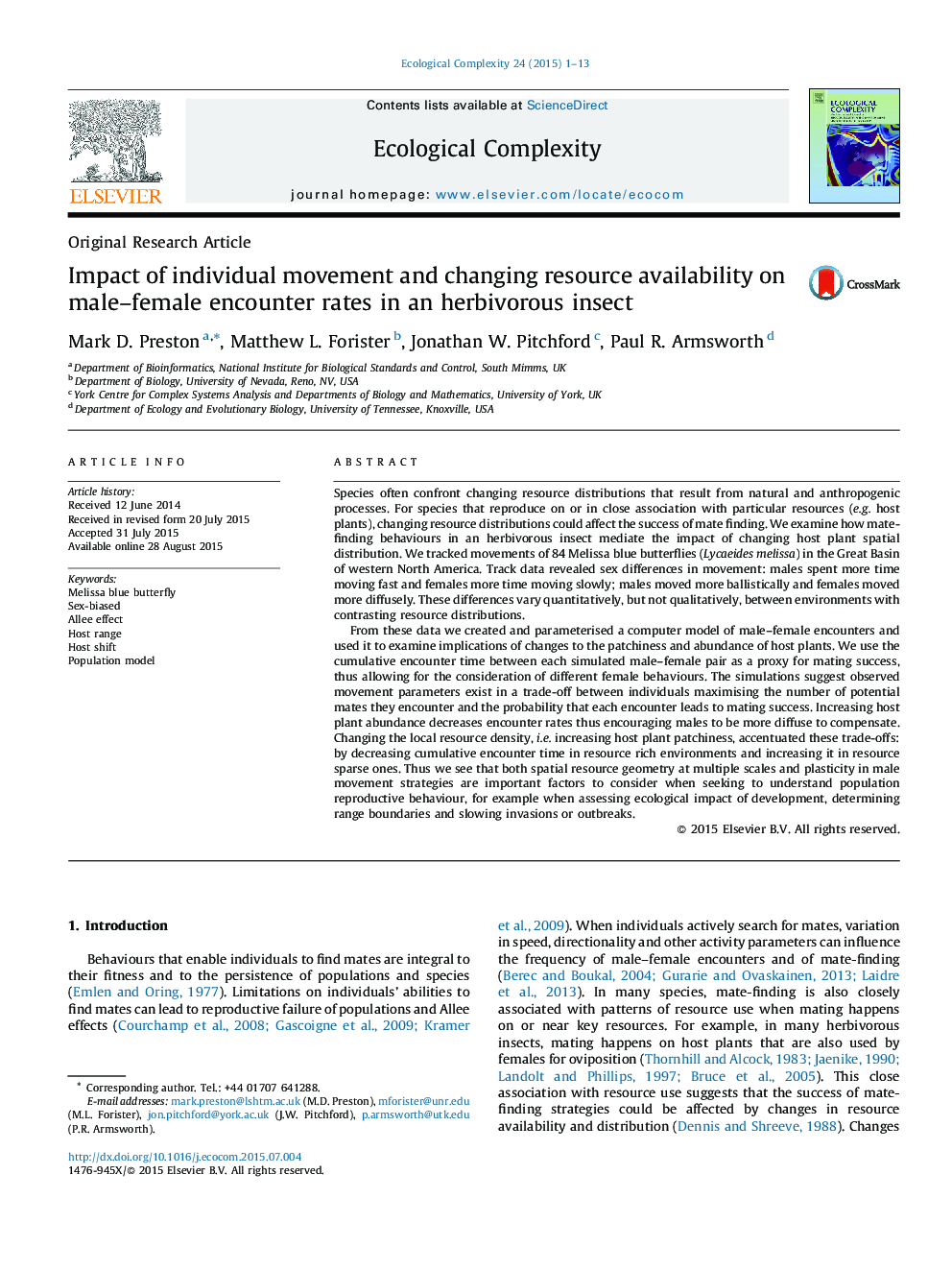| Article ID | Journal | Published Year | Pages | File Type |
|---|---|---|---|---|
| 4372423 | Ecological Complexity | 2015 | 13 Pages |
•We analyse Melissa blue butterfly movement from the Great Basin Reserve, USA.•Gender differentiated behaviour is found, not in flight speed but time in flight.•We created a simulator to investigate plant topology and mating behaviours.•Less selective females and/or fewer host plants encourage more ballistic male flight.•Multiscale densities/patchier host plants accentuate these trade-offs.
Species often confront changing resource distributions that result from natural and anthropogenic processes. For species that reproduce on or in close association with particular resources (e.g. host plants), changing resource distributions could affect the success of mate finding. We examine how mate-finding behaviours in an herbivorous insect mediate the impact of changing host plant spatial distribution. We tracked movements of 84 Melissa blue butterflies (Lycaeides melissa) in the Great Basin of western North America. Track data revealed sex differences in movement: males spent more time moving fast and females more time moving slowly; males moved more ballistically and females moved more diffusely. These differences vary quantitatively, but not qualitatively, between environments with contrasting resource distributions.From these data we created and parameterised a computer model of male–female encounters and used it to examine implications of changes to the patchiness and abundance of host plants. We use the cumulative encounter time between each simulated male–female pair as a proxy for mating success, thus allowing for the consideration of different female behaviours. The simulations suggest observed movement parameters exist in a trade-off between individuals maximising the number of potential mates they encounter and the probability that each encounter leads to mating success. Increasing host plant abundance decreases encounter rates thus encouraging males to be more diffuse to compensate. Changing the local resource density, i.e. increasing host plant patchiness, accentuated these trade-offs: by decreasing cumulative encounter time in resource rich environments and increasing it in resource sparse ones. Thus we see that both spatial resource geometry at multiple scales and plasticity in male movement strategies are important factors to consider when seeking to understand population reproductive behaviour, for example when assessing ecological impact of development, determining range boundaries and slowing invasions or outbreaks.
